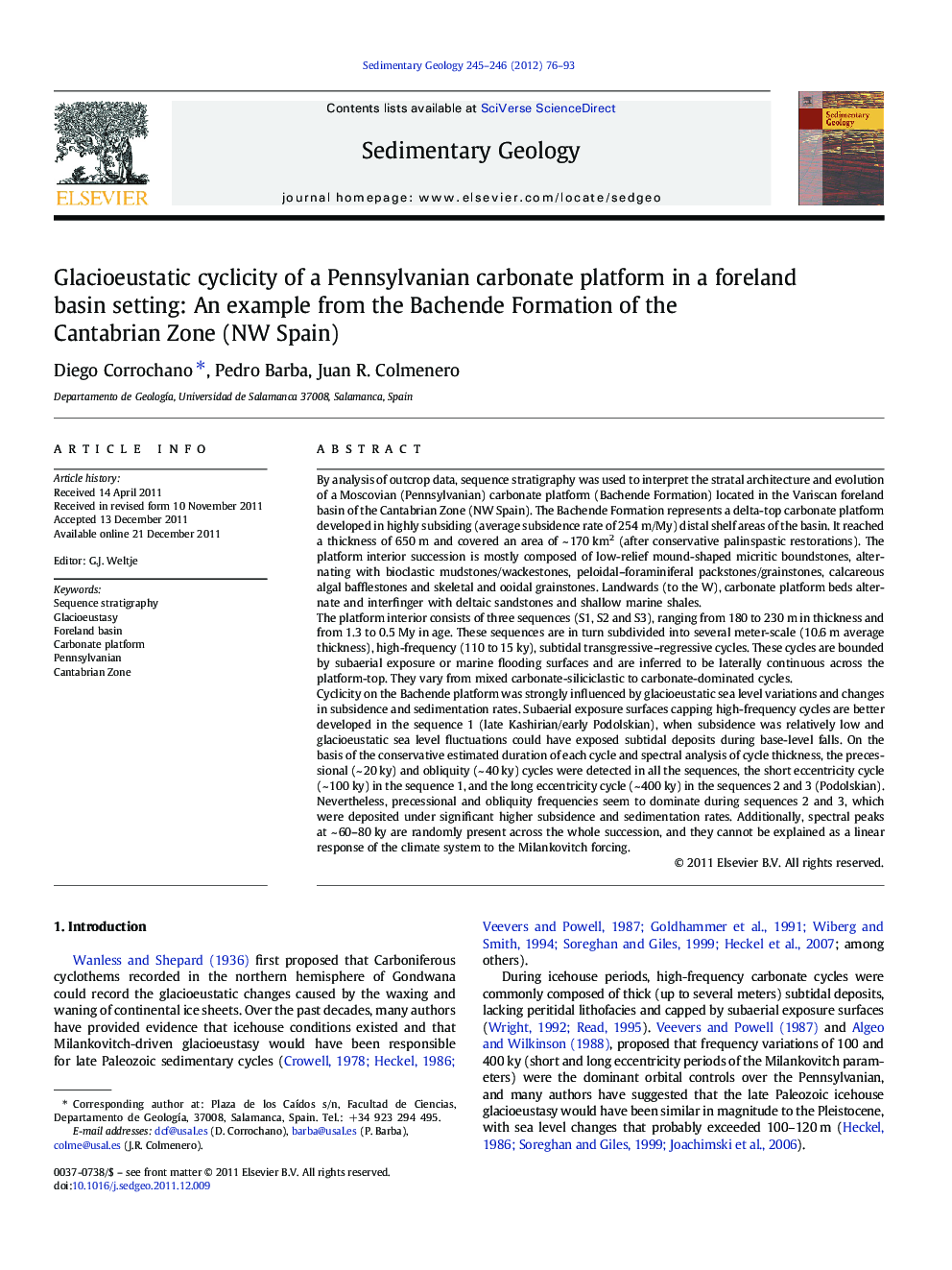| Article ID | Journal | Published Year | Pages | File Type |
|---|---|---|---|---|
| 4689875 | Sedimentary Geology | 2012 | 18 Pages |
By analysis of outcrop data, sequence stratigraphy was used to interpret the stratal architecture and evolution of a Moscovian (Pennsylvanian) carbonate platform (Bachende Formation) located in the Variscan foreland basin of the Cantabrian Zone (NW Spain). The Bachende Formation represents a delta-top carbonate platform developed in highly subsiding (average subsidence rate of 254 m/My) distal shelf areas of the basin. It reached a thickness of 650 m and covered an area of ~ 170 km2 (after conservative palinspastic restorations). The platform interior succession is mostly composed of low-relief mound-shaped micritic boundstones, alternating with bioclastic mudstones/wackestones, peloidal–foraminiferal packstones/grainstones, calcareous algal bafflestones and skeletal and ooidal grainstones. Landwards (to the W), carbonate platform beds alternate and interfinger with deltaic sandstones and shallow marine shales.The platform interior consists of three sequences (S1, S2 and S3), ranging from 180 to 230 m in thickness and from 1.3 to 0.5 My in age. These sequences are in turn subdivided into several meter-scale (10.6 m average thickness), high-frequency (110 to 15 ky), subtidal transgressive–regressive cycles. These cycles are bounded by subaerial exposure or marine flooding surfaces and are inferred to be laterally continuous across the platform-top. They vary from mixed carbonate-siliciclastic to carbonate-dominated cycles.Cyclicity on the Bachende platform was strongly influenced by glacioeustatic sea level variations and changes in subsidence and sedimentation rates. Subaerial exposure surfaces capping high-frequency cycles are better developed in the sequence 1 (late Kashirian/early Podolskian), when subsidence was relatively low and glacioeustatic sea level fluctuations could have exposed subtidal deposits during base-level falls. On the basis of the conservative estimated duration of each cycle and spectral analysis of cycle thickness, the precessional (~ 20 ky) and obliquity (~ 40 ky) cycles were detected in all the sequences, the short eccentricity cycle (~ 100 ky) in the sequence 1, and the long eccentricity cycle (~ 400 ky) in the sequences 2 and 3 (Podolskian). Nevertheless, precessional and obliquity frequencies seem to dominate during sequences 2 and 3, which were deposited under significant higher subsidence and sedimentation rates. Additionally, spectral peaks at ~ 60–80 ky are randomly present across the whole succession, and they cannot be explained as a linear response of the climate system to the Milankovitch forcing.
